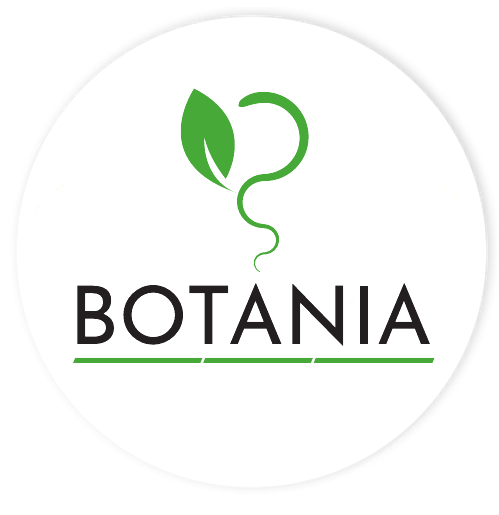Descrição
A sinergia dos diferentes componentes de Plantagen Forte, permitem obter um produto com uma alta biodisponibilidade do seu principal princípio ativo, a curcumina. O componente principal de Plantagen Forte é um extrato de rizoma de curcuma, altamente concentrado, purificado e obtido por cristalização. Este processo está patenteado e permite extrair os dois derivados principais da curcumina, a desmetoxicurcumina e a bisdesmetoxicurcumina. Desta forma obtém-se um preparado altamente solúvel e com maior biodisponibilidade via oral, o que aumenta a sua eficácia. Curcumina em micelas poliméricas que favorecem sua assimilação e atinge uma quantidade superior a outras cúrcumas do mercado com a quantidade utilizada. A curcumina presente no Plantagen Forte foi submetida aos mais estritos controlos de forma independente pelos laboratórios Phycher em França outorgando-lhe um grau de segurança e eficácia dos mais elevados do mercado. Tem o certificado de qualidade ISO 22000.Advertências
Hipersensibilidade a algum dos componentesApresentação
Caixa com 40 cápsulas de 616 mgBibliografia
1.- Shoba G, Joy D, Joseph T, Majeed M, Rajendran R, Srinivas PS. Influence of piperine on the pharmacokinetics of curcumin in animals and human volunteers. Planta Med 1998; 64:1167-1172.
2.- Surh YJ, Chun KS, Cha HH, y cols. Molecular mechanisms underlying chemo-preventive activities of anti- inflammatory phytochemicals: downregulation of COX-2 and iNOS through suppression of NF-?B activation. Mutation Research 2001; 480-481:243-268.
3.- Dunsmore KE, Chen PG, Wong HR. Curcumin, a medicinal herbal compound capable of inducing the heat shock response. Crit Care Med 2001; 29:2199-2204.
4.- Chang D-M. Curcumin: a heat shock response inducer and potential cytoprotector. Crit Care Med 2001; 29; 2231- 2232.
5.- Jovanovic SV, Boone CW, Steenken S, Trinoga M, Kaskey RB. How curcumin preferentially works with water soluble antioxidants. J Am Chem Soc 2001; 123:3064-3068.
6.- Gaedeke J, Noble NA, Border WA. Curcumin blocks multiple sites of the TGF-? signaling cascade in renal cells. Kidney International 2004; 66:112-120.
7.- Srinisan P, Libbus B. Mining MEDLINE for implicit links between dietary substances and diseases. Bioinformatics 2004; 20:1290-1296.
8.- Akhilender Naidu K, Thippeswamy NB. Inhibition of human low density lipoprotein oxidation by active principles from spices. Mol Cell Biochem 2002; 229:19-23.
9.- Choudhuri T, Pal S, Pal S, Agwarwal ML, Das T, Sa G. Curcumin induces apoptosis in human breast cancer cells through p53-dependent Bax induction. FEBS Letters 2002; 512:334-340.
10.- Shao Z-M, Shen Z-Z, Liu C-H, Sartippour MR, Go VL, Heber D, Nguyen M. Curcumin exerts multiple suppressive effects on human breast carcinoma cells. Int J Cancer 2002; 98:234-240.
11.- Radhakrishna Pillai G, Srivastava AS, Hassanein TI, Chauhan DP, Carrier E. Induction of apoptosis in human lung cancer cells by curcumin. Cancer Letters 2004; 208:163-170.
12.- Zheng M, Ekmekcioglu S, Walch ET, Tang CH, Grimm EA. Inhibition of nuclear factor– ?B and nitric oxide by curcumin induces G2/M cell cycle arrest and apoptosis in human melanoma cells. Melanoma Res 2004; 14:165-171.
13.- Han S-S, Keum Y-S, Seo H-J, Surh Y-J. Curcumin suppresses activation of NF-?B and AP-1 induced by phorbol ester in cultured human promyelocytic leukaemia cells. J Biochem Molecul Biol 2002; 35:337-242.
14.- Bharti AC, Shishodia S, Reuben JM y cols. Nuclear factor- ?B and STAT3 are constitutively active in CD138+ cells derived from myeloma patients and suppression of these transcription factors leads to apoptosis. Blood 2004; 103:3175-3184.
15.- Liontas A, Yeger H. Curcumin and resveratrol induce apoptosis and nuclear translocation and activation of p53 in human neuroblastoma. Anticancer Res 2004; 24:987-998.
16.- Elattar TMA, Virji AS. The inhibitory effect of curcumin. Genistein, quercetin and cisplatin on the growth of oral cancer cells in vitro. Anticancer Res 2000; 20:1733-1738.
17.- Mukhopadhyay A, Bueso-Ramos C, Chatterjee D, Pantazis P, Aggarwal BB. Curcumin downregulates cell survival mechanisms in human prostate cancer cell lines. Oncogene 2001; 20:7597-7609.
18.- Nakamura K, Yasunaga Y, Segawa T y cols. Curcumin down-regulates AR gene expression in prostate cancer cell lines. Int J Oncol 2002; 21:825-830.
19.- Hour TC, Chen J, Huang CY, Guan JY, Lu SH, Pu YS. Curcumin enhances cytotoxicity of chemotherapeutic agents in prostate cancer cells by inducing p21WAFI/CIPI and C/EBP? expressions and suppressing NF-?B activation. The Prostate 2002; 51:211-218.
20.- Deab D, Jiang H, Gao X y cols. Curcumin sensitizes prostate cancer cells to tumor necrosis factor-related apoptosis-inducing ligand/Apo2L by inhibiting nuclear factor- ?B through suppression of I?B? phosphorylation. Mol Cancer Ther 2004; 3:803-812.
21.- Cheng AL, Hsu CH, Lin JK y cols. Phase I clinical trial of curcumin, a chemopreventive agent, in patients with high-risk or pre-malignant lesions. Anticancer Res 2001; 21:2895-2900.
22.-Mahady GB, Pendland SL, Yun G, Lu ZZ. Turmeric (Curcuma longa) and curcumin inhibit the growth of Helicobacter pylori, a group 1 carcinogen. Anticancer Research 2002; 22:4179-4182.
23.- Foryst-Ludwig A, Neumann M, Schneider-Brachert W, Naumann M. Curcumin blocks NF-?B and the mitogenic res ponse in Helicobacter pylori-infected epithelial cells. Biochem Biophys Res Com 2004; 316:1065-1072.





